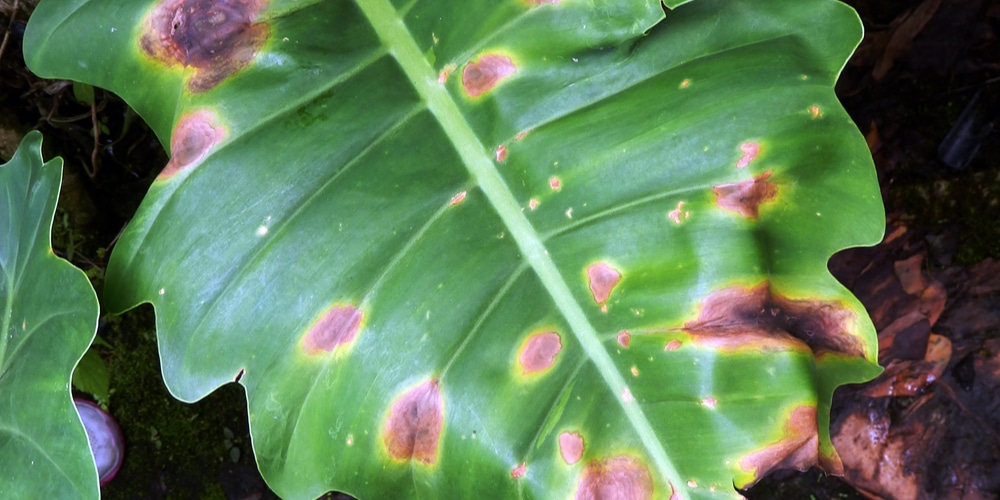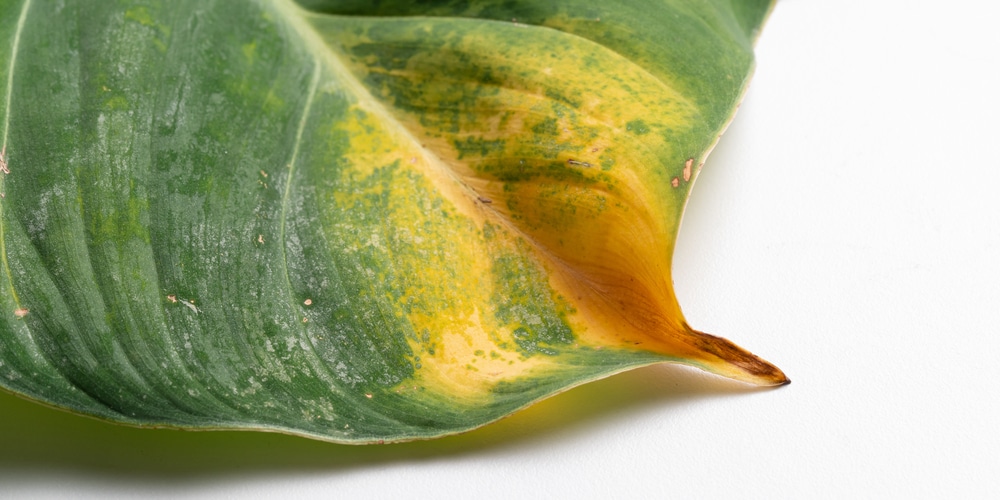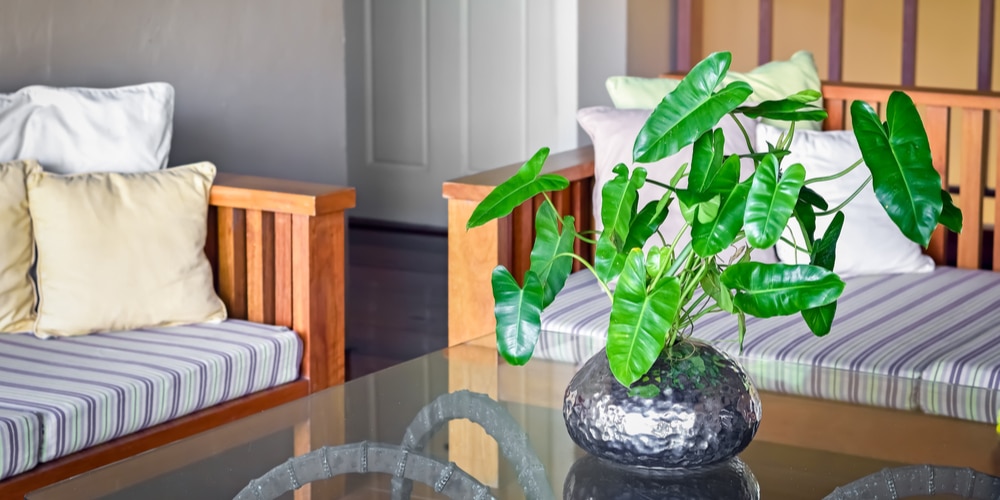Philodendrons are some of the easiest plants to grow in a typical home. However, this doesn’t mean they’re not immune to pests and issues such as philodendron leaf spot disease.
One thing you have to look out for when caring for a philodendron is the philodendron leaf spot disease, which is characterized by brown or yellow spots appearing on the foliage. When this happens, you should probably cut back on watering and lower humidity levels around the plant. You should also move it away from direct sunlight and spray the leaves with a homemade solution of liquid dish soap and baking soda.
What is Philodendron Leaf Spot Disease?

Over-eager plant owners may notice that their philodendrons have developed circular spots on the foliage that are either yellow or brown. It’s most likely a leaf spot disease philodendron and caused by several factors.
The main cause of leaf spots is a damp environment. Too much moisture or humidity isn’t good for philodendrons as it invites fungi and bacteria. When this happens, your plant will be affected and its leaves won’t be as shiny or healthy.
Leaf spot disease can also be caused by constantly watering over the plant and getting the leaves wet. What you should know about philodendrons is that they don’t really need overhead watering- they can get the moisture they need in the soil and roots just fine. To this end, it’s also not a good idea to mist them regularly or else it will damage the leaves and ultimately, your plant.
Spotting the disease is easy- just check the surface of your philodendron leaves and look for the telltale brown, yellow or black spots. Once you confirm that this is the case, it’s best to immediately stop watering and put your philodendron in a place where it doesn’t get direct sunlight.
Then, follow the steps below steps to treat the leaf spots and bring your philodendron back to a healthy state.
How to Fix Philodendron Leaf Spot Disease
Fortunately, a philodendron plant having black or yellow spots doesn’t necessarily mean the end. You can mix up a batch of homemade anti-fungal treatment to try and stop the bacteria from spreading to the other leaves.
To fix philodendron leaf spot disease, you can mix together water and two tablespoons of baking soda, as well as a drop of liquid dish soap. Put the mixture in a sprayer and spray the affected leaves.
The best way to treat leaf spot disease is to act upon it as soon as you see them. The spots will be visible and shouldn’t be too hard to spot. However, if left alone the spots might spread to the stem and roots. If this is the case then it’s better to dispose of the plant and start anew.
You should also isolate the philodendron away from your other plants because the disease is contagious. Prune the plant and take away the yellow leaves and stems using a sterilized pruner or scissors. Leave the green and healthy leaves alone.
Prevention is the Key to Avoid Philodendron Leaf Spot Disease
With luck, you’ll have stopped the leaf spot disease from spreading and brought your plant back to life.
To prevent leaf spot disease, you’ll need to adjust your watering habits and possibly move the philodendron to a different spot in your room or house.
When watering philodendrons, it’s best to aim the spout right on the plant soil. Overhead watering invites bacteria and fungi in, and it’s what starts the disease. You’ll also want to observe a less frequent watering schedule- only water when the top two inches of the soil are dry. You can do this using the finger method or with a popsicle stick or chopstick.
Good airflow is essential, as well as keeping an eye on humidity levels. Don’t keep the philodendron constantly wet, and it’s not a good idea to mist them.
Lastly, you’ll want to keep your philodendron away from direct sunlight, as it tends to scorch the leaves. These plants do just fine in the shade or in bright indirect light. They can thrive in relatively dry conditions inside the house and don’t need that much watering.
Philodendron Leaf Spot Disease: Conclusion
Catch the leaf spot disease early and you’ll have a higher chance to save your plant.

